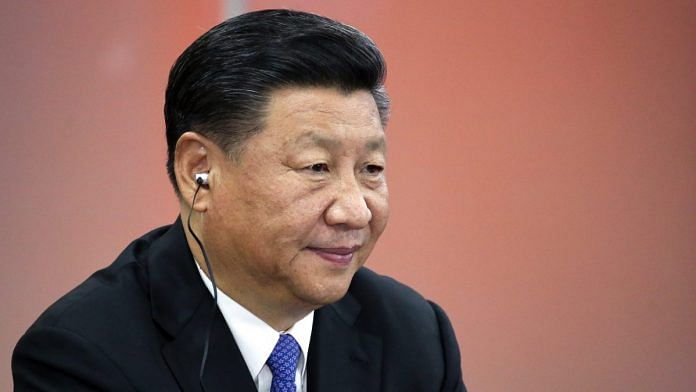New Delhi: The Communist Party of China (CPC) is finally set to hold the Fourth Plenary Session of the 19th Central Committee in October 2019 after a long delay.
While the party generally holds seven plenary sessions in a span of five years (there are exceptions), the next such assembly is scheduled for at least 580 days after the last one: that’s an interval of six months more than usually observed.
Some observers perceive the delay as a reflection of the growing power struggle between President Xi Jinping and his adversaries, but an analysis by two Chinese scholars argues that it could be attributed to a simple scheduling procedure.
What is a plenary session?
At the central level, power in the CPC is distributed among a few bodies, arranged in a hierarchical order. The largest is the CPC’s central committee, which comprises 205 full and 171 alternate members: While the former have voting rights, the latter don’t.
In recent times, some of the most important “political and historic” shifts have taken place at these plenary sessions. For instance, it was in the Third Plenum of the 11th Party Congress in 1978 that China began its economic reforms.
It was at the last plenum in February 2018 that the two-term limit for the Chinese President was abolished, which paved the way for Xi to remain in control for longer than his predecessors and strengthen his grip on power.
The 25-member politburo and the seven-member politburo standing committee outrank the central committee.
Every five years, the CPC Congress (with over 2,200 members) meets to decide the future leadership of the party. In the interim five years, the central committee is the top executive body.
“A plenum (‘plenary session’) is the convening of the… Central Committee, during which time the committee’s political bureau (Politburo) proposes policies for review or approval,” write scholars Jude Blanchette and Mingda Qui in the aforementioned analysis.
Xi under pressure?
According to the analysis by Blanchette and Qui, since the 1970s, on average, each plenum is held every 300-400 days.
The long delay between the last session and the upcoming one has thus triggered speculation about a growing power struggle in China.
The CPC leadership has never been a monolithic group and is rather believed to have several important factions, such as the Shanghai Clique or Princelings.
The rise of Xi and his subsequent consolidation of power was seen by many observers as the marginalisation of these factions.
The delay in the holding of the plenary session fuelled speculation that factionalism might be on the rise and Xi could be facing more political competition.
This comes in the backdrop of an ongoing trade war with the US, slowing domestic growth, and protests in Hong Kong.
The delay could just be a scheduling adjustment
Blanchette and Qui, however, argue that while “Xi may well be facing opposition within the party leadership… the delayed plenary session is likely not evidence of such unrest”.
“A simpler explanation holds that the delay in the Fourth Plenum actually stems from events in early 2018, specifically the unexpected announcement of the back-to-back Second and Third Plenums, held in January and February, respectively,” note Blanchette and Qui.
Therefore, according to the two scholars, the more likely explanation for this delay is the fact that two back-to-back plenums were held in early 2018, so the delay is just a scheduling adjustment.
The two scholars argue that calling a plenum in February 2018 was necessary to introduce such a major shift in the Chinese constitution.
The Hong Kong protests, against greater Chinese interference, among other concerns, and the US trade war are likely to be on the table at the plenum.
“The meeting will be held during a time of significant upheaval not seen for 100 years, and a critical period for China as it realises the great rejuvenation of the Chinese nation,” notes the official statement given to Xinhua News.






